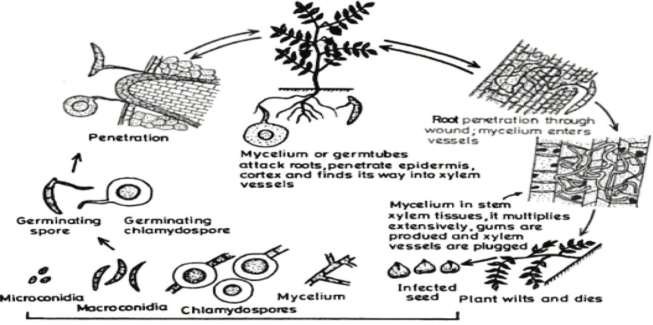
The life cycle of F. solani on field peas has been well studied, providing a general understanding of how the pathogen infects the host plant.
The general life cycle for most Fusarium species begins with thick-walled resting spores (chlamydospores) that overwinter in infected soil, on infected crop residue or seed, and are the primary source of disease inoculum.
As the seed germinates, the plant releases root exudates that signal the resting spores to germinate and produce hyphae.
The hyphae infect the plant at the developing hypocotyl (region below cotyledon) and epicotyl (region above cotyledon) and at the point of seed attachment. Hyphae can also produce asexual macroconidia spores that can directly infect developing roots.
At the end of the growing season, overwintering spores (chlamydospores) are produced in infected plant tissue that can survive in the soil for many years.
The infection process is estimated to take seven to ten days, like Aphanomyces root rot oospore infection.
It is still unclear if other Fusarium pathogens, such as F. avenaceum, cause root rot in the same way as F. solani.
F. avenaceum and F. poae differ from the other Fusarium species because they do not produce chlamydospores and can only survive on infected crop residue.
The ability of F. avenaceum to thrive in diverse environments (pulse roots, cereal roots and heads, crop residues) has allowed this pathogen to maintain or increase its prevalence across the Prairies provinces.
